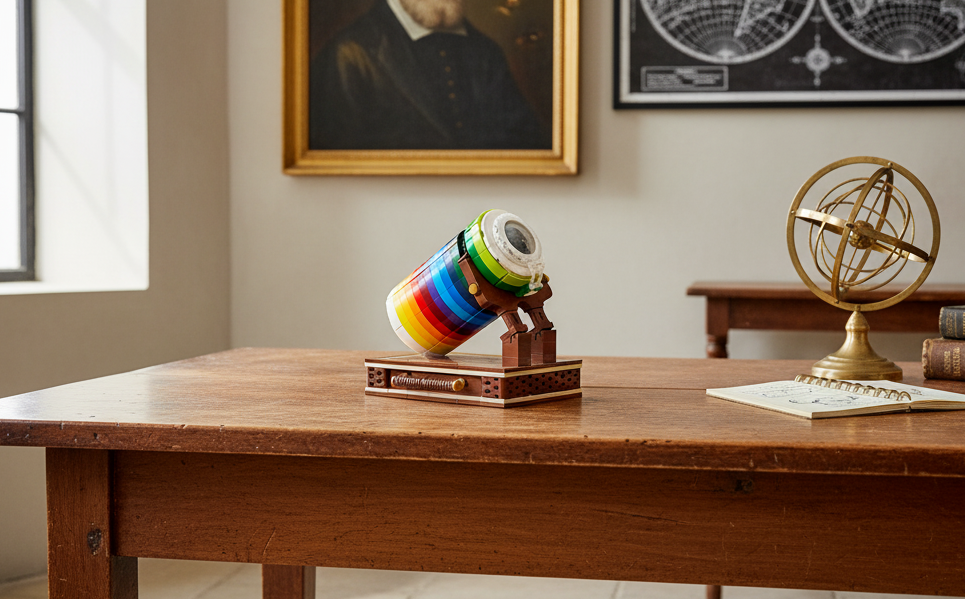One of the biggest disadvantages of the original, 21058 "Great Pyramid of Giza" set is that in the end you only get half a pyramid. Although it's an interesting possibility to display it in places with little space, it's still half a pyramid, a fact that Lego itself acknowledged by including in the back means of connection (using axles) to a second set, in order to obtain a complete pyramid.
What's the problem with that solution? Well, you have to buy two sets...
But behold the pyramid MOC by peme.

For all those who like the design of the original pyramid and want to have a complete pyramid without buying a second set or acquiring additional parts, this is the solution!
With a clever rearrangement of pieces and a small reduction of height (one brick) and width (four bricks) we can obtain a “complete” pyramid where half has the final white finish, and the other half shows the construction in progress. This MOC has yet another surprise, it is easy to rotate the pyramid so that the final face is to the front and the construction to the back and vice-versa.


However, some details are lost in this construction, for example the cross view of the pyramid that shows the tunnels and the burial chamber. The structure of the pyramid is now quite different.


The ongoing construction of the pyramid with the stone sleds, ropes, pulleys and cranes are kept identical to the original.

The Nile landscape is also slightly modified, but with practically no visual impact, keeping the boats, 2 smaller pyramids (one smaller than the other), temples, sphinxes, an obelisk and the workers' houses.


The dimensions of the original set are 20 cm x 35 cm x 32 cm (height x width x length) and in the MOC these become respectively 19 x 30 x 45.


It can be transported without any fear of disassembly, the whole set is quite robust once finished, an advantage obtained by imitating the original assembly to the maximum.
The instructions are very well detailed and easy to follow, with few or no steps that raise doubts but require a little critical thinking now and then. In terms of parts left over at the end of the assembly, there are very few, and they are easily stored either inside the large pyramid or in the compartment of the smaller pyramid (in case you want to build the original in the future).


The construction took about 4 to 5 hours being that the first steps of building, the first layer of the base, are the most "delicate" until a good connection is achieved.
Pros:
- Pyramid "complete" with only one set
- No additional parts required
- Solid construction with no risk of disassembly during transportation.
- Final result quite appealing and close to the original
- Free instructions
- Loss of the inside of the pyramid details (tunnels and burial chamber) and some side width of the frame (less dune details)
- It has a much bigger dimension in depth, which can make it challenging to display
- Some (few) instructions/steps need a bit of critical thinking.





